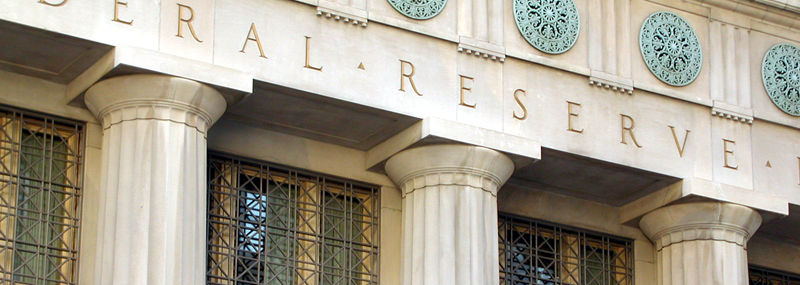by Jurrien Timmer, Director of Global Macro, Fidelity Investments
Key takeaways
- The recent market correction took the S&P 500 Index down 10%. This was the second correction since the market's recovery in March, topping the 8% correction in June.
- The correction was driven by diminishing expectations of further fiscal relief. Less fiscal relief amid rising COVID cases and a Fed that is already doing all it can has tempered investors' expectations for future growth.
- On the bright side, the market is now quite oversold and there is some renewed hope that Congress can work out a fourth fiscal relief package.
- A major theme for investors has been the prospect of higher inflation, driven by the combined monetary/fiscal policy actions. One sign of this has been the decline in real rates, which in turn supported the rally in precious metals.
- However, with the Fed owning almost a quarter of the TIPS market (Treasury Inflation-Protected Securities), it's possible that it has "painted the tape" and caused inflation expectations to be overstated.
The correction off the September 2 all-time high of 3,588 continued last week, and at Thursday's low of 3,209, the S&P 500 Index had declined 9.8%. This is the second correction since the March 23 low, with the first one being the one in June for a drawdown of 8%.
There are several catalysts behind the declines, ranging from uncertainty as the election approaches, downbeat speeches from Fed officials, some acceleration in COVID cases (leading to fears of renewed lockdowns), and perhaps, most notably, a concern that the unexpected battle in Congress over the Supreme Court will cause the next round of fiscal relief to be left behind.
About the expert

Jurrien Timmer is the director of global macro in Fidelity's Global Asset Allocation Division, specializing in global macro strategy and active asset allocation. He joined Fidelity in 1995 as a technical research analyst.
It all leads to a setback in reflationary expectations. If Congress cannot get another round of fiscal relief done before the election, then it might not happen until January (when the new Congress is sworn in). That, combined with rising COVID cases in Europe and elsewhere, could lead to a lowering of growth expectations at a time when the market is already stretched.
If there is less fiscal relief while the Fed is already doing everything it can, perhaps we will see a peak in the growth rate of the money supply, relative to GDP. Excess liquidity growth has been one of the drivers for the market's impressive rebound, so any loss on that front could be important.
This decline in reflationary expectations has so far shaved 2 points off the forward P/E ratio: down from 21.6 to 19.5 for 2021 and from 18.5 to 16.7 for 2022.*
We are seeing this reset of expectations play out across the markets, from the dollar (up), to gold (down), to inflation expectations (down), to very weak market breadth numbers.
Below we can see that the latest correction has been very broad-based, with almost no sectors spared. Energy and financials continue to lag far behind and are no longer being offset by strength in the FANGs or even gold.
With the loss of breadth picking up speed last week, 53% of stocks in the SPX are now making 4-week lows.
And only 29% of the 24 industry groups are up over the past 4 weeks. Last week only the utilities sector produced more advancers than decliners.
The good news is that the market is now very oversold. On Thursday only 8% of stocks were above their 20-day moving average. That is below the 13% reading produced following the June 8 trading high. So we should be able to get a bounce here. But until investors regain confidence in the reflation narrative, the upside may be limited.
Are inflation expectations overstated?
As mentioned above, gold and the dollar have corrected quite a bit in recent days, as reflationary expectations have come down. As I have written recently, a big market theme has been that inflation expectations have been on the rise even though nominal rates have stayed very low, leading to increasingly negative real rates. This is very bullish for the reflation thesis and brings up the analog to the 1940s, during which the Fed absorbed a massive rise in debt while also keeping interest rates very low via rate caps. The result was steeply negative real rates, which, of course, were highly reflationary.
However, I am starting to wonder if this apparently bullish signal is perhaps overstated. The chart below shows the above dynamic, with the 10-year yield pretty well anchored at around 65 basis points even as Treasury Inflation-Protected Securities (TIPS) breakevens rose to 1.69%. The TIPS breakeven inflation rate shows what investors today expect inflation to be in the future. It is equal to the difference between the real (after inflation) yield on a TIPS and the nominal (the stated interest rate) 10-year Treasury yield.
But look at the bottom panel. The Fed is buying TIPS in a big way, and since March its holdings have increased from 10% of the TIPS market to 23%. So, with the Fed now owning almost a quarter of all TIPS, it makes me wonder how much of the reflationary narrative is real and how much of it is an illusion created by the Fed itself. In other words, has the Fed "painted the tape?"
If the Fed's TIPS-buying is elevating the breakeven spread while suppressing the overall TIPS yield, and if the TIPS yield is one of the most reliable and consistent indicators for the valuation of gold, then could it be that gold has rallied beyond what might be justified?
Is that why gold has declined from 2,075 to 1,850 in recent days, just as some prominent investors have concluded that gold and real assets will become the replacement for nominal bonds on the "40" side of a 60/40 portfolio? It's a question worth pondering.
Copyright © Fidelity Investments














